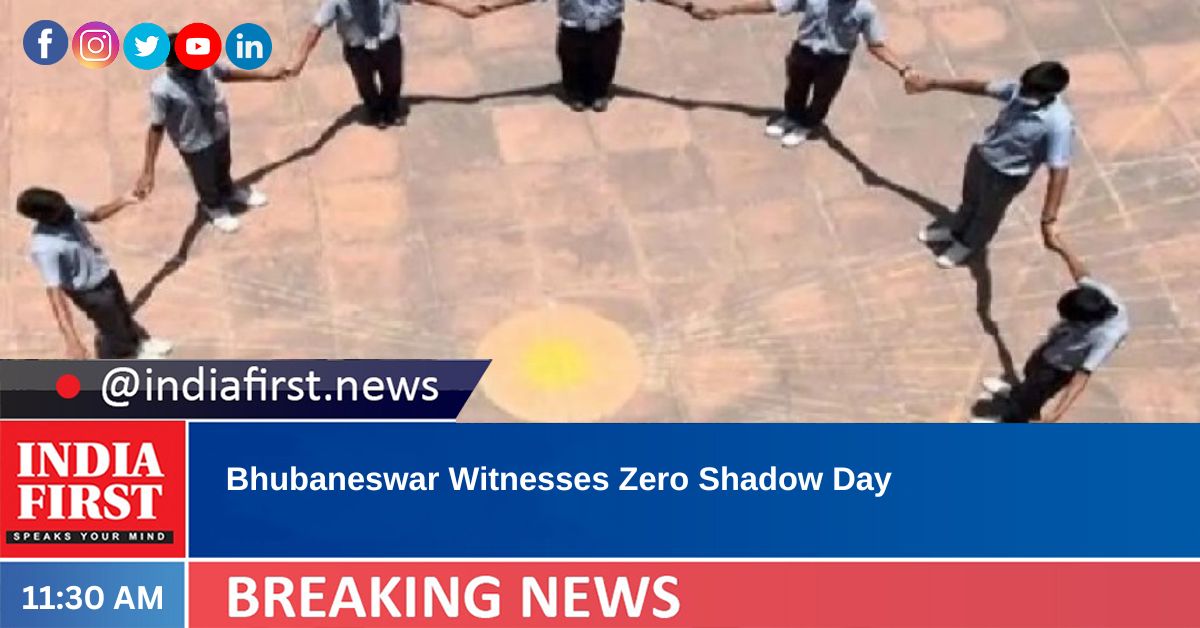At 11:43 a.m. on Sunday Odisha’s capital city Bhubaneswar experienced a ‘Zero Shadow Day’, when vertical objects appear to cast no shadow. This was because the sun was at its zenith, and so the shadow was directly under the object, a planetarium official said.
A large number of people, including children thronged the Pathani Samanta Planetarium to witness the rare event.
“Today, the Sun reached exactly overhead at (11:43 a.m.) in Bhubaneswar and the shadow of any vertical object disappeared at that instant. Zero Shadow Day occurs twice a year in a particular place, said Subhendu Patnaik, deputy director, Pathani Samanta Planetarium.
The phenomenon was observed for 2 to 3 minutes in the city. Cuttack city will witness the Zero Shadow Day on May 22 at 11.30 a.m., he said.
Uttarayan (movement of the Sun from south to north from winter solstice to summer solstice) and Dakshinayan (back from north to south) happens because Earth’s rotation axis is tilted at an angle of roughly 23.5 degrees to the axis of revolution around the Sun.
Patnaik explained that the Sun’s location moves from 23.5 degrees N to 23.5 degrees S of Earth’s equator and back. All places whose latitude equals the angle between the Sun’s location and the equator on that day experience zero shadow day, with the shadow beneath an object at local noon.
“For the first time, I have experienced this wonderful event. It enhanced my practical knowledge about how the Sun moves around the earth,” said a student, who was present at the planetarium.



Comment here